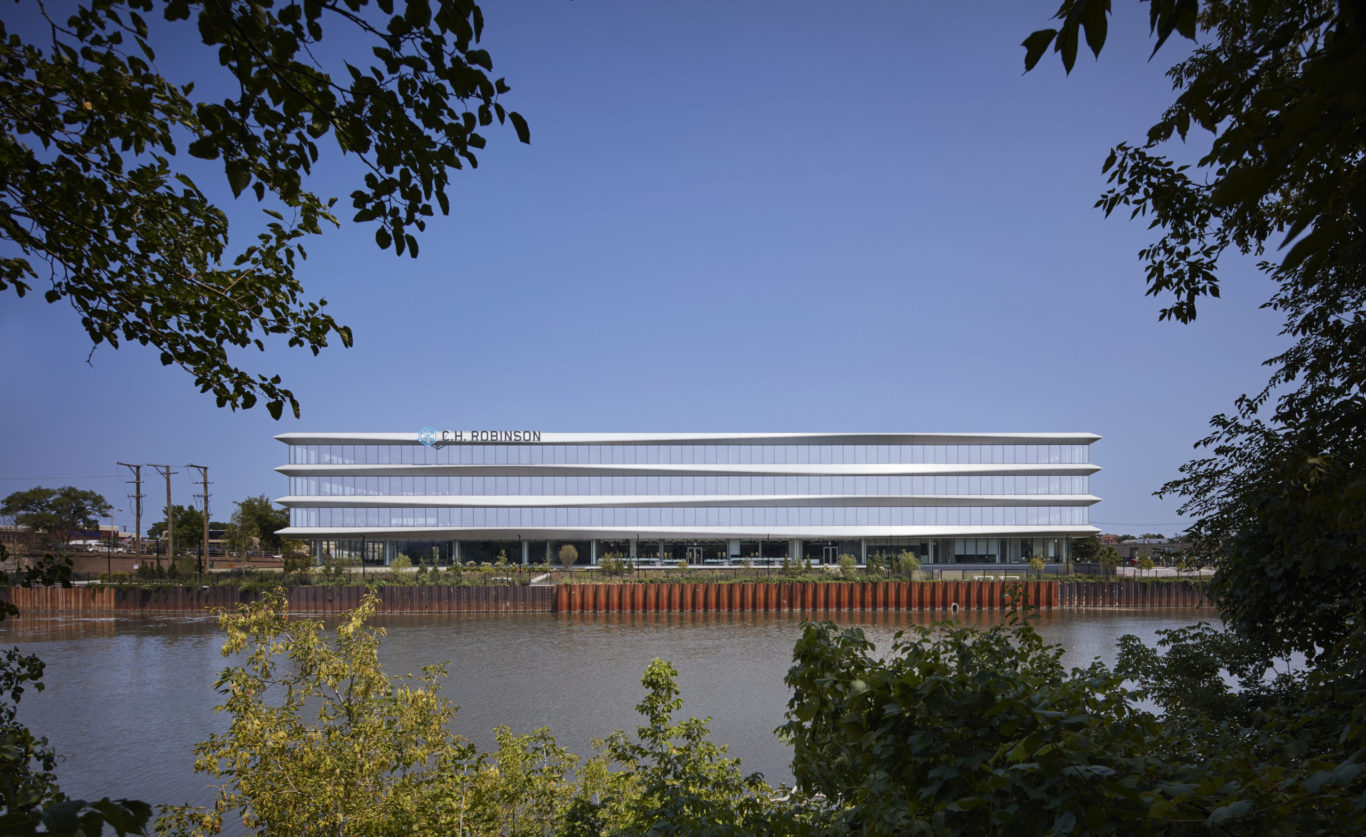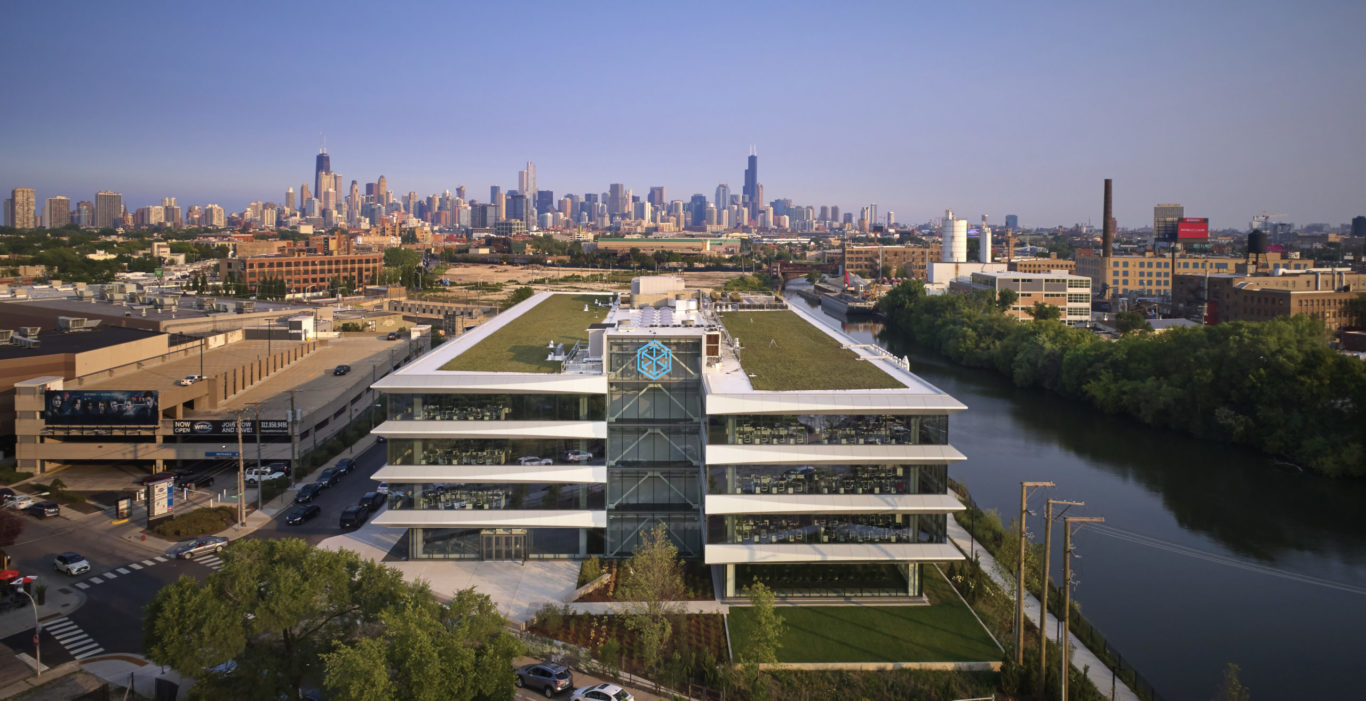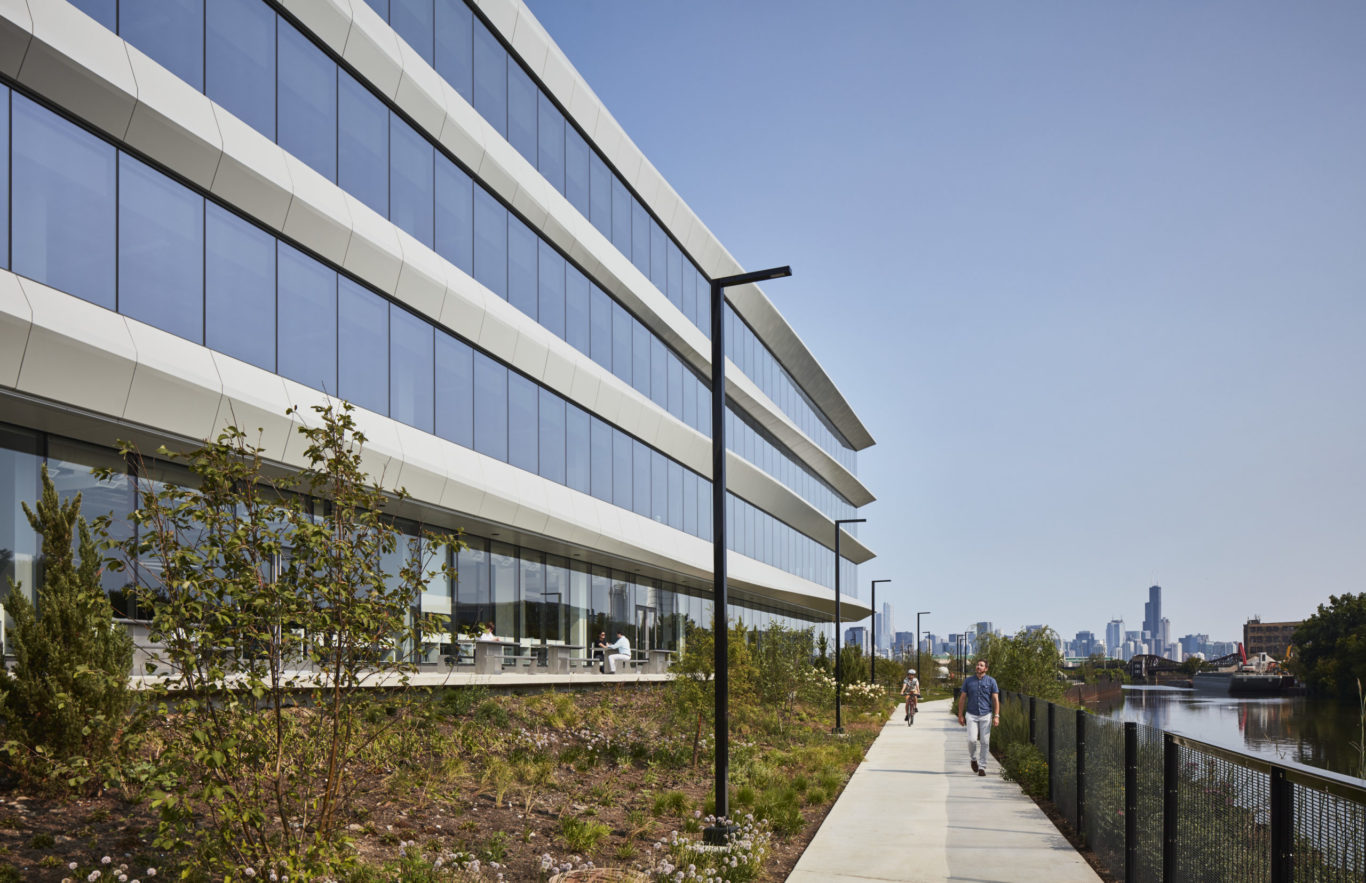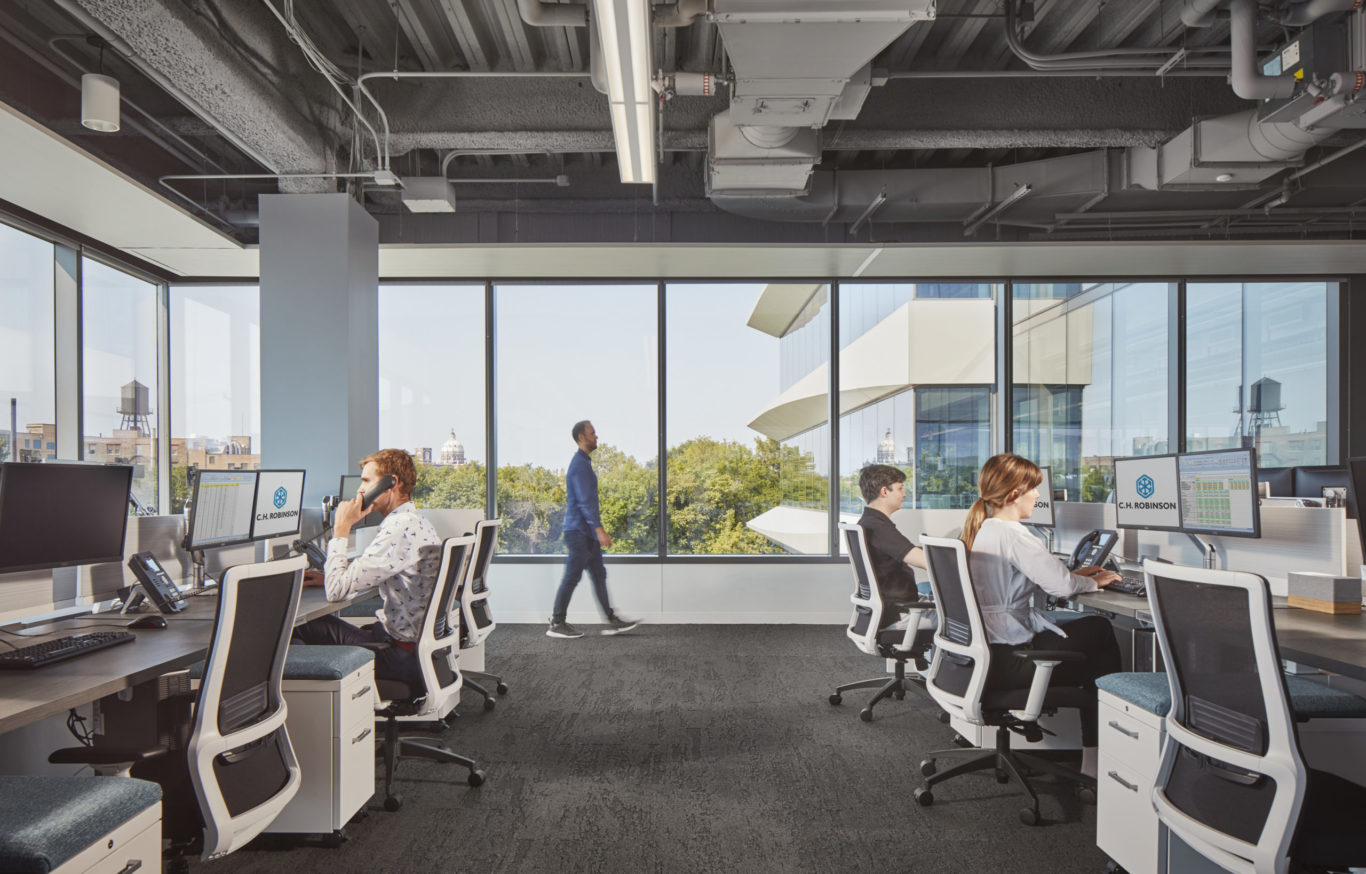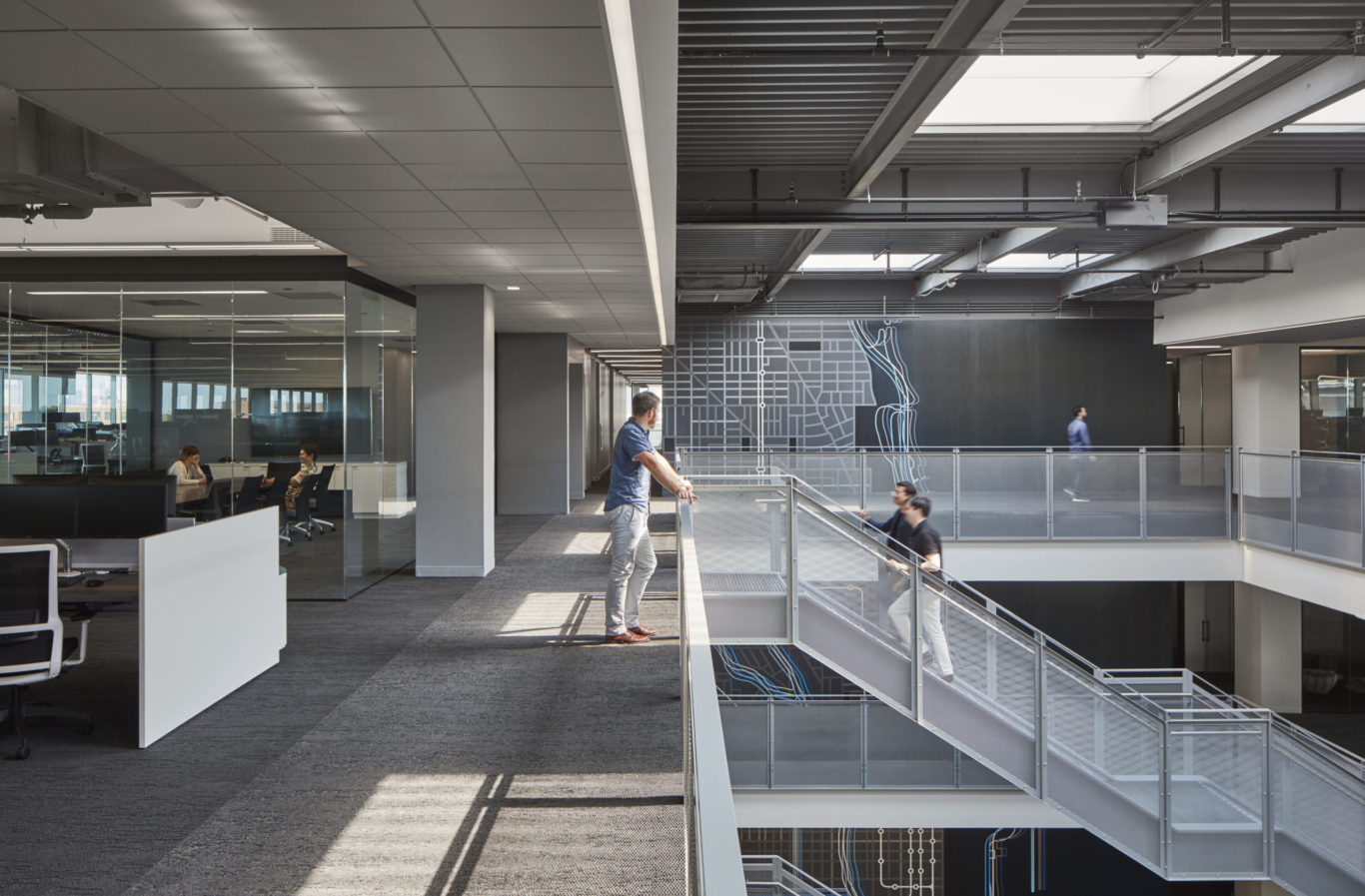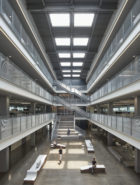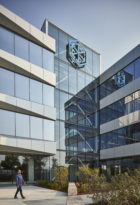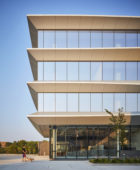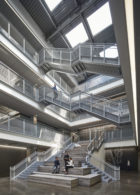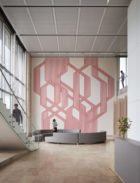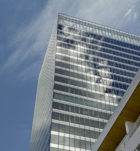Reclaiming the riverfront
The C.H. Robinson Midwest Headquarters at 1515 West Webster Avenue is the first development to be completed near the former site of Chicago’s historic Finkl steel mill, located on the riverfront at the edge of the Lincoln Park neighborhood. Prioritizing sustainability, efficiency, and connectivity, the project is a catalyst for the ongoing remediation of former industrial properties along the Chicago River.
The building is positioned at the intersection of several transit and bicycle routes, where one of the city’s vital east-west corridors meets the river’s North Branch. Wetlands and natural vegetation have been restored, and a new path at the corner of Dominick Street and Webster Avenue provides access to the riverfront, supporting the city’s rediscovery and reinvigoration of the riverfront.
